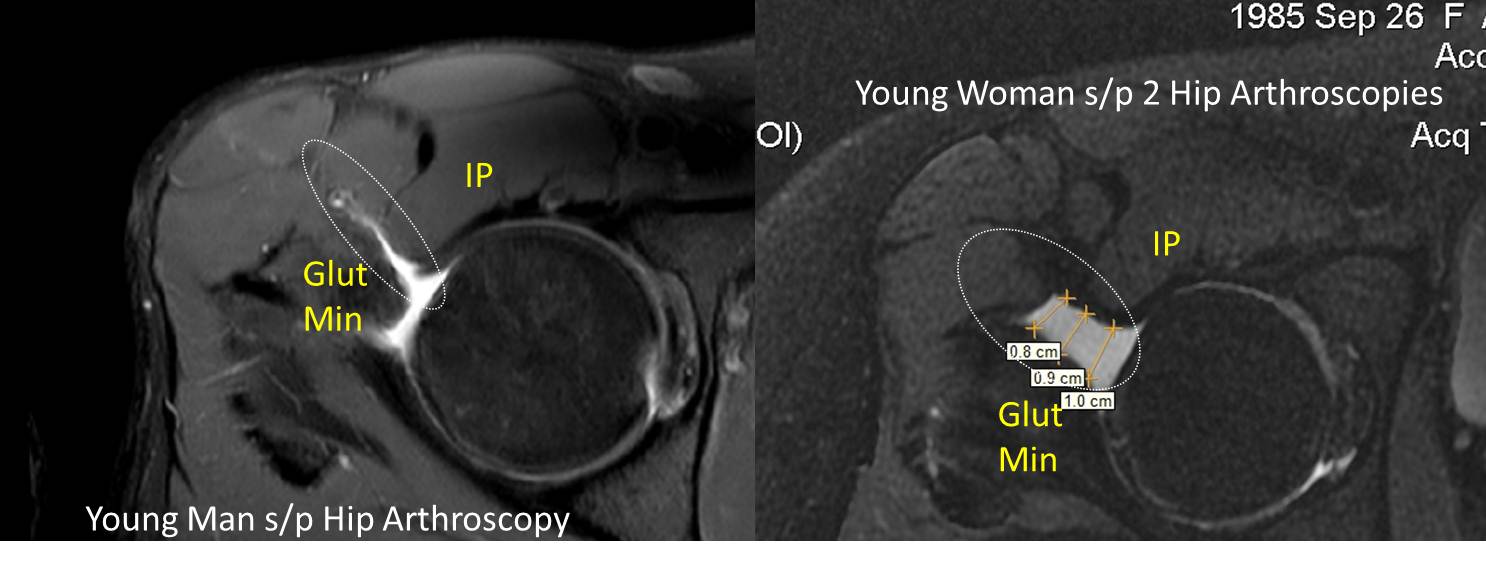Hip Arthroscopy Side Effects: The Portal Syndrome
Are there hip arthroscopy side effects you should know about? Look at the axial hip MRIs above. The one on the left is from a recent hip patient I evaluated in Grand Cayman while practicing medicine there who had a failed hip arthroscopy surgery. The one on the right is from a young woman seen in our Colorado clinic who had 3 failed hip arthroscopy surgeries. Note that in order to perform hip arthoscopy a few things need to happen. The first is that major traction has to be pulled on the hip to allow room for the hip arthroscopy instruments. How much traction? An awful lot! So much so that the major nerve of the leg and thigh (the femoral nerve) frequently loses the ability to transmit signals during the surgery. In addition, you also have to introduce instruments through the muscles, which brings us to the pictures above. This is called the “portal”.
One of the most interesting parts of medicine for me is recognizing patterns. I saw the man on the left after the woman, yet both had a lot in common. Notice the white line/area encircled by the dashed oval. This is the portal for the hip arthroscopy instruments and it shouldn’t be there months to years after the surgery. The “IP” stands for the iliopsoas muscle and the “Glut Min” stands for the gluteus minimus muscle. In the woman to the right, the damage done by the hip arthroscopy instruments (the “portal”) is so severe that the gluteus minimus muscle has retracted back by a full centimeter from where it’s supposed to be anchored to the iliopsoas muscle. While we’re still figuring out the cause of the patient’s chronic hip pain after these hip arthroscopy surgeries, I can’t help but thinking that the the changes in these muscles caused by the instruments may be the cause of serious biomechanical changes in the muscles around the hip. Stay tuned as we investigate further, but when I saw these almost identical pictures in patients thousands of miles apart, both of whom have chronic hip pain and have failed hip arthroscopy, I had to say “hmmmmmm…” For now, until I know more, I’ll nickname this the “Portal Syndrome”.

If you have questions or comments about this blog post, please email us at [email protected]
NOTE: This blog post provides general information to help the reader better understand regenerative medicine, musculoskeletal health, and related subjects. All content provided in this blog, website, or any linked materials, including text, graphics, images, patient profiles, outcomes, and information, are not intended and should not be considered or used as a substitute for medical advice, diagnosis, or treatment. Please always consult with a professional and certified healthcare provider to discuss if a treatment is right for you.

